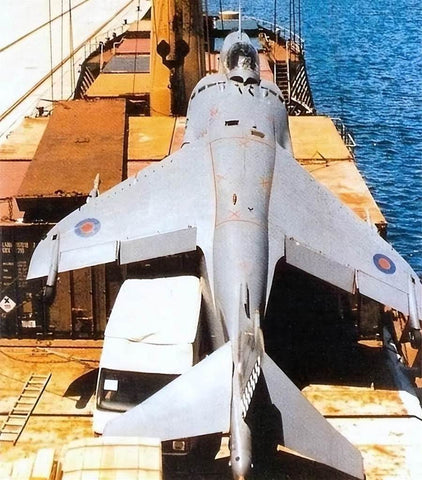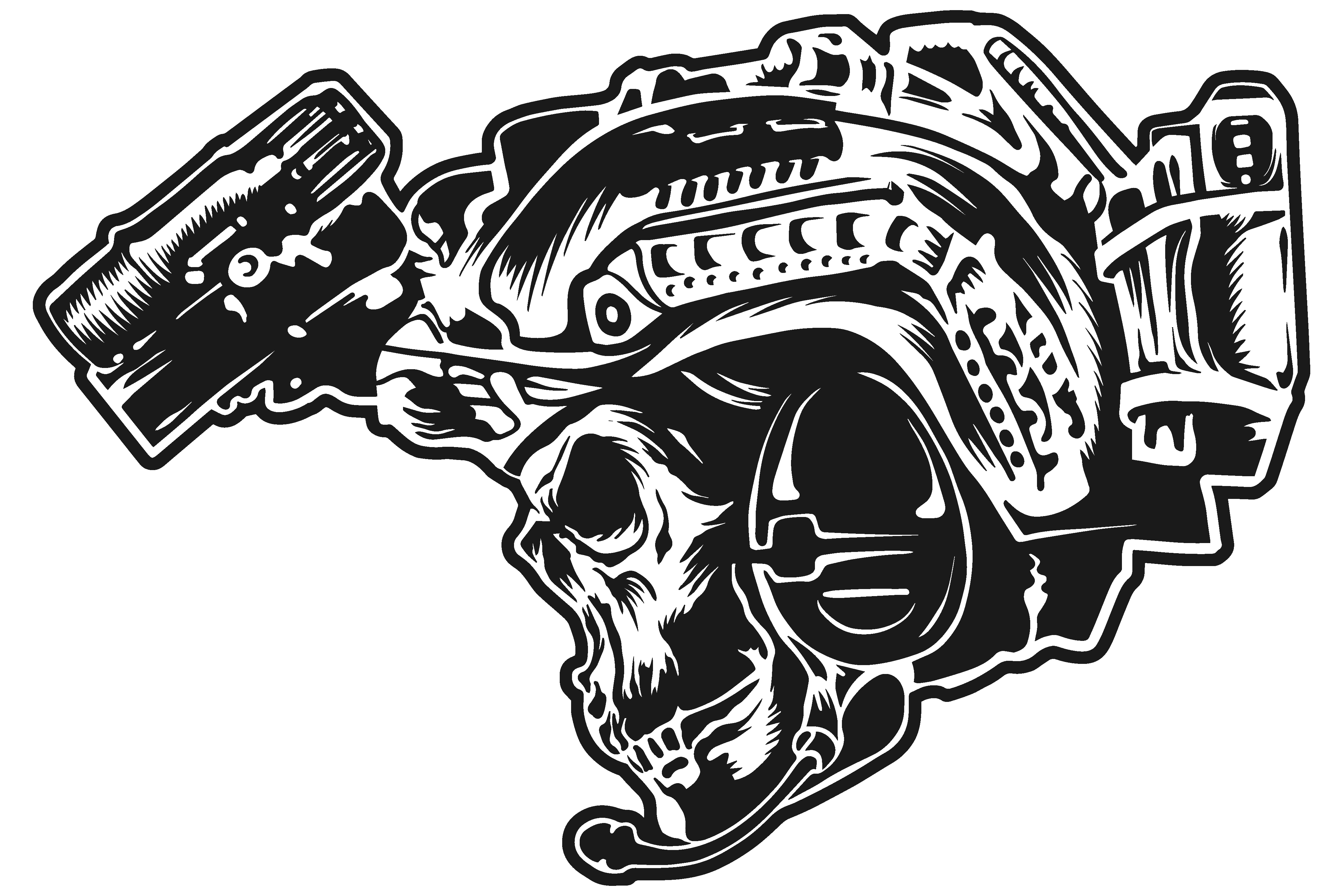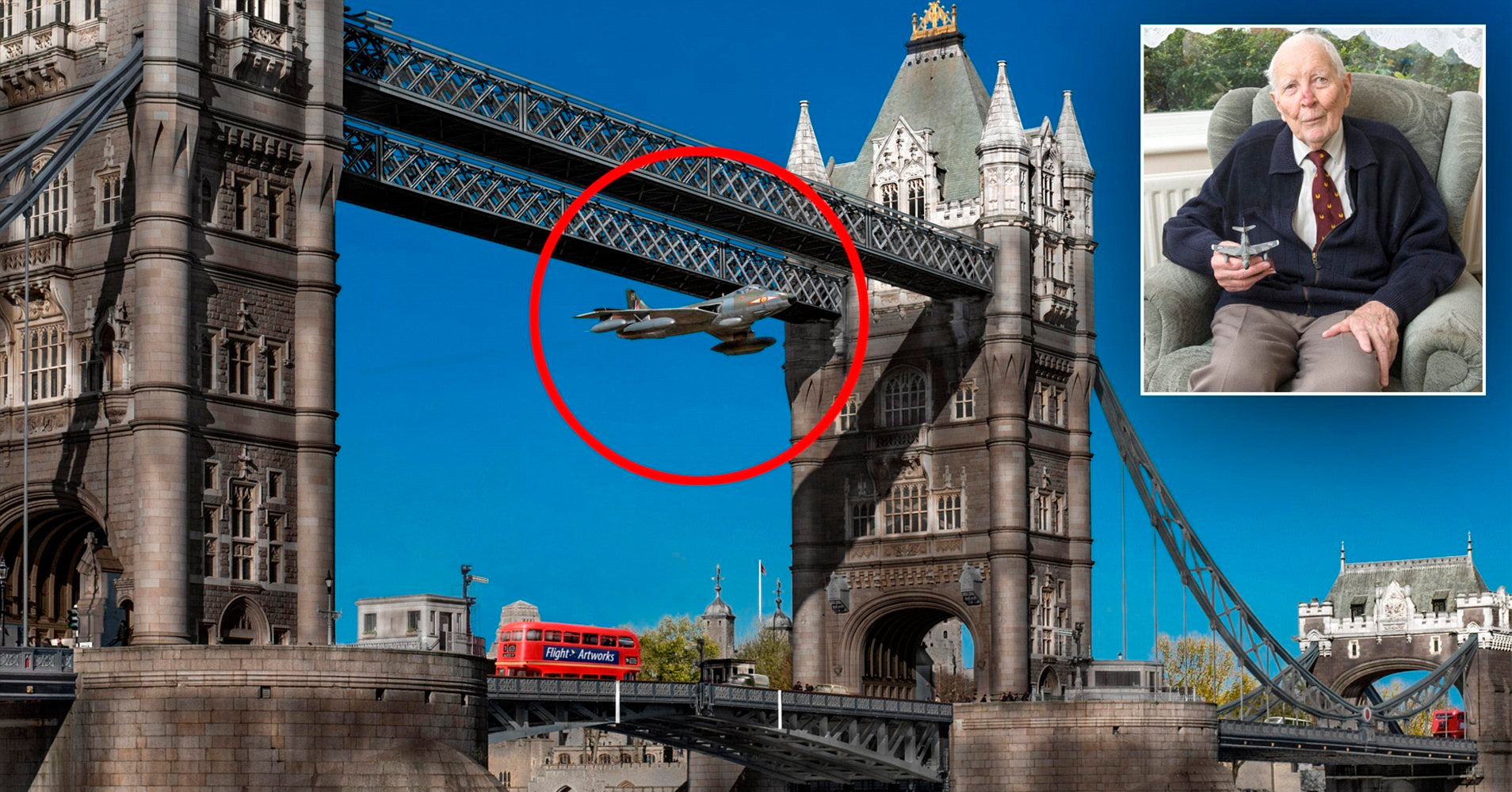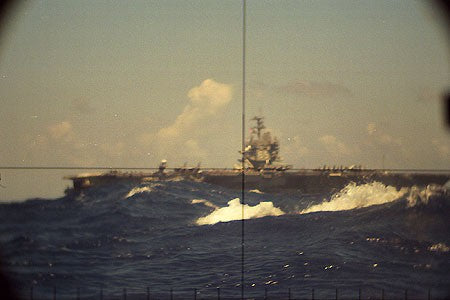Jet pilot Ian Watson was actually resigned to ejecting when he ran out of fuel in the middle of the Atlantic Ocean. Fortunately, however, he discovered a passing container ship at the last minute, which could just about be suitable as a landing pad.

Despite his incomplete training, the 25-year-old lieutenant was sent on June 6, 1983 to a NATO exercise off the Portuguese coast. The aim was to use the VTOL to spot a French aircraft carrier under combat conditions. This meant total radio silence with the radar turned off to provide the lowest possible electromagnetic profile for the "enemy".
Watson was able to carry out the reconnaissance successfully, but suddenly the radio and radar could no longer be switched on for the return flight. The British pilot searched for his home aircraft carrier for hours without success. When the fuel needle finally dropped to zero, he saw only one option: With the last bit of fuel, he headed for a known sea route where the chance of encountering any ship was still highest. If he crashed due to lack of fuel, at least he could be rescued quickly. But just as his thoughts were about to eject and crash the $7 million jet into the water, he spotted a Spanish container ship on the horizon.
The ship's crew was amazed when suddenly a Harrier of the Royal Navy hovered over them, only to make a relatively good landing at full speed. Four days later, the ship reached its port of destination in the Canary Islands, still with the jet on board. The British Navy finally paid a reward of £570,000 and indeed the Harrier was able to be made airworthy again.













2 comments
Andreas Fecker
1983 wurde der junge Harrier Pilot Ian »Soapy« Watson zu einer Search and Rescue Übung der Royal Navy auf einen Flugzeugträger in den Atlantik abkommandiert. Er erwischte ein Flugzeug, bei dem schon tags zuvor der Funk nicht in Ordnung gewesen war. Während er versuchte, mit seinem Schiff über Funk in Verbindung zu treten, verirrte er sich über den Weiten des Ozeans und der Treibstoff ging zur Neige. Da entdeckte er auf seinem Radar ein Frachtschiff und setzte den Harrier mit dem letzten Tropfen Sprit zwischen zwei Ladekränen auf die Container. Das Schiff war unterwegs nach Lissabon. Nach maritimem Brauch stand der Reederei ein Rettungserlös zu (Salvage Money). Man einigte sich auf 1,14 Millionen Dollar, von denen drei Fünftel an die Crew ging. Soapys Kommandeur rügte ihn öffentlich dafür, dass er sich trotz all seines Navigationsequipments verirren konnte. Soapy Watson bat um eine Untersuchung. Dort kam heraus, dass das Flugzeug gar nicht hätte geflogen werden dürfen, und dass der 25-jährige seine Ausbildung zum Piloten erst zu 75% abgeschlossen hatte, bevor er zu diesem Einsatz praktisch gezwungen wurde. Schließlich erhielt er auch noch die Anerkennung dafür, das Flugzeug gerettet zu haben.
(aus Andreas Fecker: 333 Superlative und Kuriositäten der Luftfahrt)
Andreas david
Wenn man sich überlegt, was heute für alte warbirds, die während des Krieges abgestürzt sind, wieder flugtauglich gemacht werden, so wie alte me 109er, spitfires, Mustangs o.ä., dann sieht der harrier, ist übrigens ein sehr harrier, noch richtig fit aus. Tolle story 👍
Leave a comment
All comments are moderated before being published.
This site is protected by hCaptcha and the hCaptcha Privacy Policy and Terms of Service apply.